DIVERSITY
Year of the rabbit celebrated at Lunar New Year festival
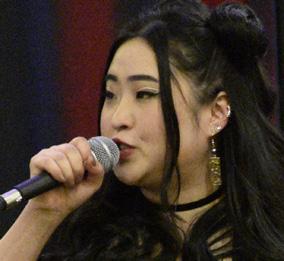
Page 4-5
SCENE
History through structure: buildings on campus made to last
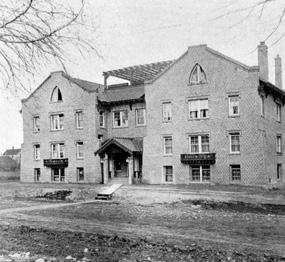
Page 6

Year of the rabbit celebrated at Lunar New Year festival

Page 4-5
History through structure: buildings on campus made to last

Page 6
go toward the CCI.
Klucking said they had started to consider this plan in March when the interest rates on construction were lower. Klucking said since then, the interest rates have increased, and while it isn’t as likely, it is still an option.
Morgana Carroll News EditorGovernor Jay Inslee’s proposed budget has allotted $6 million for the construction of the Center of Cultural Innovation (CCI) at CWU.
ASCWU held four open forums at the start of January to inform the public and answer any questions students had about progress on the CCI.
They were joined by Director of Capital Planning & Projects
Delano Palmer and Vice President of Finance and Administration Joel Klucking. Palmer and Klucking gave a presentation about the process of planning a building on campus and how they would attain funding.
According to Palmer, the state can only supply funding for academic buildings, which is why only $6 million of funding can be supplied by the state budget. According to Palmer, the $6 million would be used for making offices for diverse departments, such as African Studies and Women’s Gender and Sexuality Studies.
One proposed idea to fund the rest of the CCI is by refinancing the SURC, and taking out more bonds.
According to Klucking, this would mean reevaluating the current amount that CWU still owes to pay back the money it cost to build the SURC, and extending the time they would pay those monthly amounts while also using some of the money to
According to ASCWU Director of Equity and Multicultural Affairs Mariah Minjarez, there is not a finalized location for where the CCI will be, but options include a renovated International Building and a renovated Old Heat Building, among others.

According to Minjarez, the Equity and Services Council (ESC) and the Diversity and Equity Center (DEC) will be working with administration throughout the process.
“Those two are looking to start up that partnership because they have a shared mission and values of serving marginalized communities on campus,” Minjarez said.
According to Minjarez, CWU is aware that the needs of the students predate the completion of the CCI. Parts of Black Hall will be renovated to currently fit the needs that the CCI will eventually fulfill. What parts of Black Hall will be renovated has not been decided yet.
 Megan Rogers
Assistant News Editor
Megan Rogers
Assistant News Editor
Jeffery (Jeff) Bousson joined CWU in December as the university’s new sustainability officer. As the sustainability officer, Bousson said he is developing projects, programs and initiatives related to sustainability.
Bousson studied political science with a minor in public administration at Eastern Illinois University then got his master’s in climate science and solutions at Northern Arizona University. After working in the sustainability field for a few, years Bousson came to CWU.
“I’ve been hired to lead the development and implementation of our first ever adopted campus-wide Climate Action Plan,” Bousson said. “Also identifying funding opportunities for landscape-scale or largescale commercial renewable energy projects, as well as transportation electrification and building decarbonization [opportunities].”
According to Bousson, the Climate Action Plan will serve as a blueprint for CWU to help the university achieve its greenhouse gas reduction goal. Bousson said this plan will also help increase
engagement within the CWU community.
“We’re going to be reviewing what we’ve already done in terms of our energy, our buildings, our transportation, our food and dining, as well as how we incorporate sustainability within [the] curriculum and academia,” Bousson said.
According to Bousson, CWU wants to identify opportunities for decarbonization within every facet of campus.
“Potential electrification, potential green energy, waste reduction efforts, waste diversion, also, fully utilizing the Wildcat Neighborhood Farm which is a great resource for us,” Bousson said.
Bousson said that while these projects are not yet concrete, he also hopes to set up a sustainability newsletter and secure funding for potential geothermal and solar projects.
“We’re exploring opportunities to maximize our roofscapes in our property to see what we can do to decarbonize [and] how we power our electricity, but also decarbonize how we heat and cool our building,” Bousson said.
Bousson said he thinks sustainability is important on college campuses because it provides unique
opportunities for collaboration.
“I think the kind of intellectual capital and the kind of enthusiasm that you can tap into on campus is really unique,” Bousson said. “Higher education is in a unique situation where we can be the leaders, and we’re already seeing that [with] other universities that are aiming to center equity within sustainability and climate change, and also equip and prepare our students for successful and meaningful careers.”
Bousson is originally from the North Shore suburbs of Chicago and what drives his passion for sustainability is the family camping trips he would take growing up.
“Having that exposure at a very early age, my sister and I were able to have a greater appreciation for the outdoors,” Bousson said.
Bousson said professors recognized his interest in the environment and nature, which helped him enter this field.
“We have a beautiful planet and I know that sounds kind of romantic, but when you go to national parks or national forests … it’s really easy to feel connected and that helps you press the proverbial refresh button in terms of whatever is going on in your daily life,” Bousson said.
OPINION AI art needs to go

Page 9
The CWU student who passed away in a residence hall on Jan. 17 has been identified as Gabriel “Gabe” Jungmann.
According to his obituary on DignityMemorial.com, Jungmann was a sophomore studying communication and film at CWU. The obituary said Jungmann “died from unknown causes the morning of January 17 in his dorm room.”
According to NBC Local Yakima, Kittitas County Coroner Nick Henderson said he completed the autopsy on Jan. 24. According to Henderson, the results of the autopsy were inconclusive, and the cause of death is still unknown. Henderson said he will be continuing further tests, which could take weeks.
The obituary said: “Gabriel was born May 20, 2002, in Everett, the youngest child of Conrad and Jennifer Jungmann … He loved hiking in the mountains, river rafting, playing video games with friends, taking road trips with his father, gardening with his mother, and cracking jokes with his brother and

sister. Always quick with a quip, Gabe touched everyone he knew with his dry humor, broad intelligence, and sincere caring for other people.”
On Jan. 24, Chief of Staff Andrew Morse released a statement to The Observer:
“We are deferring to the medical examiner’s evaluation and will continue respecting the wishes of the student’s family regarding further communication about their life and the positive impact they had on their peers, community and all who knew them.”
According to a CWU News update by Wohlpart on Jan. 26, “While the Kittitas County Medical Examiner’s Office has not yet determined Gabe’s cause of death, we continue to work with the Jungmanns on how to best communicate the details of their tragic loss with the CWU community.”
Wohlpart urged community members who need support to utilize Student Counseling Services by calling (509) 963-1391. He said that employees who need support can contact the Employee Assistance Program at (800) 777-4114.
A semi-truck crashed and caught fire on Jan. 30 on I-90 around milepost 110, just outside of Ellensburg. There is no known cause of the fire yet, according to KXLY.
Yakima man William Ray Onsurez was charged with kidnapping and carjacking on Jan. 16 according to the Yakima Herald. Onsurez was stealing a Doordash vehicle that had two children in the back seat.
According to KOMO News, a fatal shooting in a homeless camp in the Ship Canal Bridge area of Seattle inspired residents of Seattle and Seattle City Councilmember Alex Pederson to call for the state government to address these issues.
Following the beating and death of Tyre Nichols, the Memphis Police Department has disciplined two additional police officers on top of the five original officers who were fired and face murder indictment for Nichols’ killing, according to AP News.
Jair Bolsonaro, former president of Brazil, has applied for a six-month tourist visa to remain in the U.S., according to The Guardian. Bolsonaro has been residing in Florida since December.
California is the last holdout on the vote to cut Colorado River water usage according to AP News. Six states rely on the river for their source of water, and have proposed a bill to reduce the amount of water used in basin areas. California is the only state not to have voted yes yet.
A military factory in the center of Isfahan, Iran was targeted by drones loaded with bombs as reported by authorities on Jan. 29, according to NBC News, which resulted in an explosion and damage to the facility.
No arrests have been made after a shooting in South Africa that left eight people dead and three others wounded, according to The Guardian. The shooting occurred Jan. 29 at a private residence during a birthday party by two men who have not been identified.
A Pakistani mosque in the city of Peshawar was hit by a suicide bomber on Monday, according to AP News. The explosion caused the roof to collapse and reportedly killed 59 people and injured 150 others.
dies' and held the monopoly on British trade from the Far East until the early 1800s.
Three decades in the latter half of the nineteenth century, known as the Clipper Age, not only provided great excitement for tea drinkers and for the general public, but also had a major effect on the social customs of that time.
The Clipper Age has thus deservedly earned its special place in the history of Tea, which will be elaborated on at present.
The East Indiamen
The British East India Company was granted their charter in 1600 by Queen Elizabeth I as the 'Company and Merchants of London trading with the East In-
It was in the 1820s that the British East India Company took over vast expanses of land in the state of Assam in north-east India. They brought in people from neighboring states to help clear the land and plant tea bushes in neat rows, thus establishing the first tea estates, many of which exist to this day. By the beginning of the 20th century, Assam had become the leading tea producing region in the world.
After the tea leaves were plucked from the bushes and processed in the factories of the Assam estates, the finished product was packed in wooden boxes called tea chests, which were taken to the nearest riverside
Lead Editor Katherine Camarata
News Editor
Morgana Carroll
Assistant News Editor
Megan Rogers
Sports Editor Isaac Hinson
Copy Desk Lead / Opinion Editor
Jacqueline Hixssen
Online Editor Madison VanRavenhorst
Assistant Copy Editor Brittany Cinderella
Faculty Adviser Jennifer Green
Graphic Design Lead
Glacie Kehoe-Padilla
Assistant Graphic Designer
Brandon Davis
Photo Editor Andrew Ulstad
Senior Reporter
Omar Benitez
Staff Reporters
Alahnna Connolly
Tre Henderson
Gavin Johnson
Charis Jones
Zileni Milupi
Joshua Packard
Deacon Tuttle
MJ Rivera
Jordyn Rossmeisl
Editorial Consultant Francesco Somaini
jetty in bullock carts. There, they were loaded onto boats which took them to Calcutta, from where they were transferred to the holds of the East India Company’s large, strong, slow ships, known as East Indiamen, each of which could carry 1,200 tons of cargo.
Since the Company had the monopoly on British trade from the Far East, their priority was to minimize costs by loading as much as possible onto each ship.
A round trip took almost two years, if the weather remained fair, but could take much longer if the conditions were unfavorable! The tea drunk in England was thus about a year old and another year's supply of tea was always kept in reserve in London in case the ships were captured or lost at sea.
Although quite a number of East Indiamen, such as the ‘Charles Grant’, were built from fine quality teak in Indian dockyards, and were more resistant to sea worms that ate through the bottom of the ships made from English oak, the life expectancy of these ships was limited to four voyages made within a period of eight to ten years. In two centuries, the Company’s ships made 4,600 voyages between London and the Far East. Some of the most famous of these stately ships, dubbed Lords of the Ocean, were the Princess Royal, the Warley and the Charles Grant. Later models were modified to look like single-decked warships and called Blackwall Frigates, the better known ones being the Seringapatam and the Prince of Wales.
The Tea Clippers
Once British Navigation Law opened up the country’s ports to American vessels, the East In-
dia Company lost its monopoly and realized that they needed to transport their tea much faster in order to be ahead of rival firms. With the additional supply available, the dealers in London found that the best way to sell their tea was to advertise and promote its freshness. As the newer tea had a better flavor, the demand for fresh tea grew.
The Americans were using ‘clippers’, thus called because, with their narrower hulls and a greater number of sails, they ‘clipped off’ miles. These ships, designed like large yachts, were attractive, sleek, graceful and fast. They also had enough stowage space to carry more than a million pounds of tea. The first American clipper to reach London was the ‘Oriental’ which arrived at West India Dock on 3 December 1850, just ninety-seven days after leaving Hong Kong!

Once the East India Company realized that the clippers were travelling three times faster than their East Indiamen (the former were completing the journey in 100 days instead of 365 days!) they sold off these ponderous ships and commissioned their own clippers, the first of which was ‘Stornoway’, built in 1850, by the firm of Alexander Hall & Sons in Aberdeen, Scotland. The renowned mercantile house of Jardine & Matheson had bought the first British-made tea clipper, Torrington, from the same firm in 1846.
These ‘greyhounds of the sea’ carrying tea and other goods from the East to the West were imbued with an aura of romance because of their speed. Soon, clipper races were all the rage. As each clipper was committed to a rival merchant in London who
wanted to get his tea on the market ahead of his competitors and sell it at a premium, these races were fought in real earnest.
Very often, these British and American vessels raced side by side all the way from their ports of origin in the Far East – dealing with fast currents, dangerous reefs, strong winds, monsoon tides and even pirates – until they reached the Thames estuary; a voyage of 14,000 miles! The final leg of the journey up the Thames, towed in by tug boats, decided who would win the race.
As no one in London knew which clipper was ahead, the excitement began when the first ship was sighted turning into the mouth of the Thames, and telegrams were shot off to the London offices of the various tea companies, reporting the progress of the ships. Newspapers carried headlines reporting who was in the lead and people thronged the docks to watch the ships being towed in by tug boats. Gentlemen's clubs buzzed with talk about who was winning and fortunes were wagered on the outcome of the race.
Tea brokers stayed in hotels close to the docks so that as soon as the first chests of tea were offloaded, they could taste samples and choose the finest teas. They then organized the delivery of the chosen chests to their tasting rooms in London and put them up for auction at the earliest.
Hometown: Anaheim, California
Years working at CWU: 3
Favorite part of campus: The SURC, because it has everything. Least favorite part of campus: The kids not cleaning up after themselves.
Favorite memory while working at CWU: The people I’ve met here
Favorite extracurricular activity: Softball and golf
Weirdest thing you’ve seen at CWU: Shower poops. My boss warned me about this when training, and the next day, I saw it for the first time.
Three words to describe you: Smart, funny, humble
Best piece of advice: Enjoy life.
If you could have one wish, what would it be: Less hate in the world.
What would you say to your younger self: Don’t spend your inheritance. I would have invested in Apple.
If you could only eat one food for the rest of your life, what would it be: Prime rib.
Gary’s motto: Thank god it didn’t smell.
Some libraries provide a cozy place to bury your nose in a book, while others offer more unusual forms of media to check out: humans.
The Human Library is an international nonprofit organization created in 2000 that coordinates conversations to “challenge stigma and stereotypes” and “create a safe space” where “difficult questions are expected, appreciated and answered,” according to a press release sent by the CWU EthicsLab.
The Ellensburg edition of the Human Library will take
place on April 22 at the Hal Holmes Community Center.
It is a collaborative project between the CWU EthicsLab, CWU Libraries and the City of Ellensburg.

David Schwann, a philosophy professor and EthicsLab coordinator, said he is eager to feature “a wide diversity of perspectives and experiences from our region of Washington.”

While online communication broadens access to various ideas, having direct conversations faceto-face is “a powerful and transformative tool for expanding our understanding of the social world,” according to Schwann.
Schwann said they hope to turn
this event into a regular occurrence, where volunteers can serve as “books” and offer their personal insight. He said he hopes the Human Library will “promote a greater understanding of others in our community and of the social importance of conversation and active listening.”
The Human Library promotional materials sport the phrase “unjudge someone,” and invite community members who defy stereotypes or have valuable experiences to volunteer as a human book.
Those who have questions or who wish to participate can reach out to EthicsLab@cwu. edu or visit Humanlibrary.org.

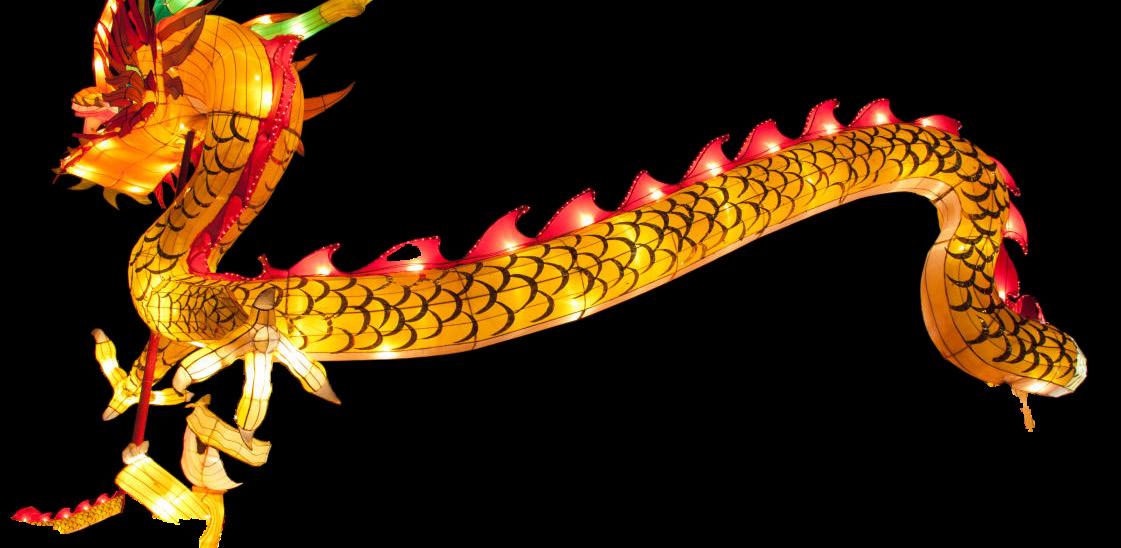 Alahnna Connolly Staff reporter
Alahnna Connolly Staff reporter
A Lunar New Year festival featuring Asian cuisine, performances by special guests and booths set up by the Korean Student Association (KSA) livened up Holmes Dining on Jan. 25. This year is the year of the rabbit, which is believed to bring hope and prosperity.
In the first hour of the event, 300 students had checked in and long lines were no match for students eager to enjoy the celebration. The line went from Holmes Dining Hall all the way to the Wildcat Shop, and stayed like that for at least two hours. Dining services gave away 200 free tickets from the student store and the event sold out in one day, according to Rhee.
CWU student Samaad Turner said, “I love how this school is appreciating different cultures and
introducing it to the students.”
The festival was put together by fifth year in music education and KSA President Jennifer Rhee. Rhee said Lunar New Year means “a time to make dumplings with her family and gives her family a reason to eat and spend time with each other.”
Rhee said she thinks this event is important to the Asian community because, “there is a little bit of absence of acknowledgement in the Asian community at [CWU] and this event helps bring that to life and make us feel like we’re back at home with our families, since we are mostly from the westside.”
Jennifer Rhee has been a part of KSA since around 2020. She said she was interested in bringing the club back to campus because the last members graduated and left. Rhee organizes meetings and events along with member recruitment.
The event was supported by dining services executives Dean Masuccio, Denise Payton, Dustin Atkinson and Joe Ritchie. Rhee said 17 volunteer members helped set up and pull this event together, and said she received funding from SLICE. CWU Hype helped advertise the event around campus and on social media.
“I want to put a lot of emphasis on Hype and the event center for helping,” Rhee said.
Dr. Chong Eun Ahn is the director of the Asian studies program and associate professor of history. Rhee said Ahn helped her get where she is now.
As students finished their food early, a student named Kashawna Singleton said, “This event was way more than I expected and I can’t wait to see what the performers will be doing.” The line finally dissolved at 7:00 p.m. as performers took to the stage.
Performances included an opening act by a vocalist, Elizabeth Jenkins, who is a certified black belt and put on a nunchuck performance, a member of KSA, a thank you message from Ahn, a Korean dance shuffle game and Hannah Cho,a singer who is native to Washington state. There was also a traditional Chinese dance done by Renee Bi.
The menu offered chicken dumplings, Chinese pork steamed buns, Korean rice cake soup, Tang Yuan (sweet rice balls), Japchae (stir fried noodles), fried spring rolls and whole-roasted chicken with fresh fruit.
Vice President of Student Success Lucha Ortega said, “I like the university, all the students, faculty and staff. Everything has been positive and I was invited to this event and can’t wait to taste the food. The school does a great job with diversity.”
Rhee wore a traditional dress that was a wedding dress from her mentor Ahn who got married in the dress. The traditional wedding dress is called a Humboldt.
Ahn funded an extra $1,000 to the Lunar New Year event as they had a tight budget. They needed more money, and the contributions of the Asian Studies department was the reason Hannah Cho was able to come out and perform for the event.
This is Rhee’s last year at CWU, and she said her parting gift was connecting her dad CJ Rhee to the dining team as a personal sourcer. The event was a family affair, as Rhee’s dad was involved in providing ingredients for the meal. Her father CJ Rhee communicated with dining services the whole time to make sure they were getting the correct food as authentically as he could.
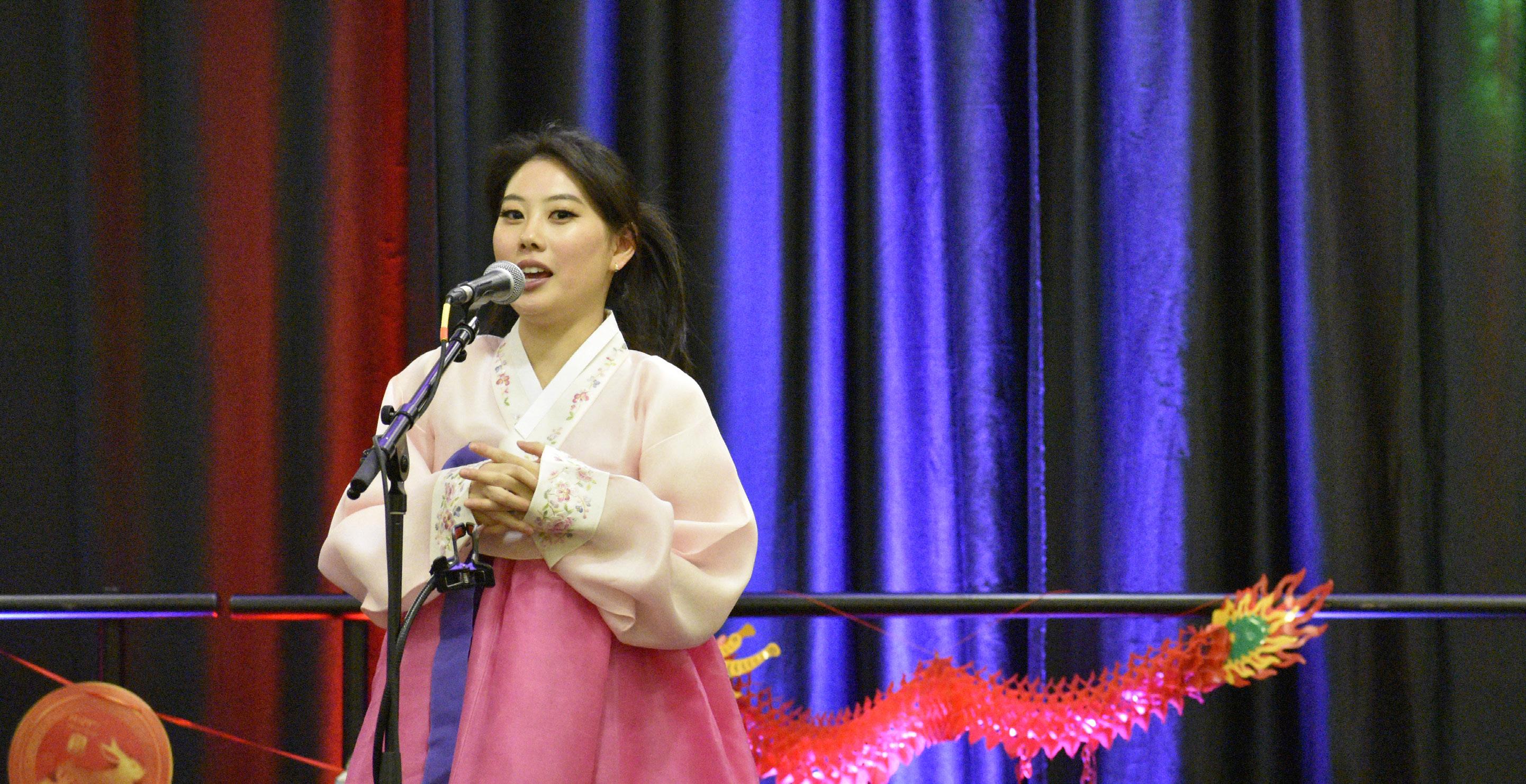 JenniferRhee,PresidentofKSA. Photo by Andrew Ulstad
JenniferRhee,PresidentofKSA. Photo by Andrew Ulstad



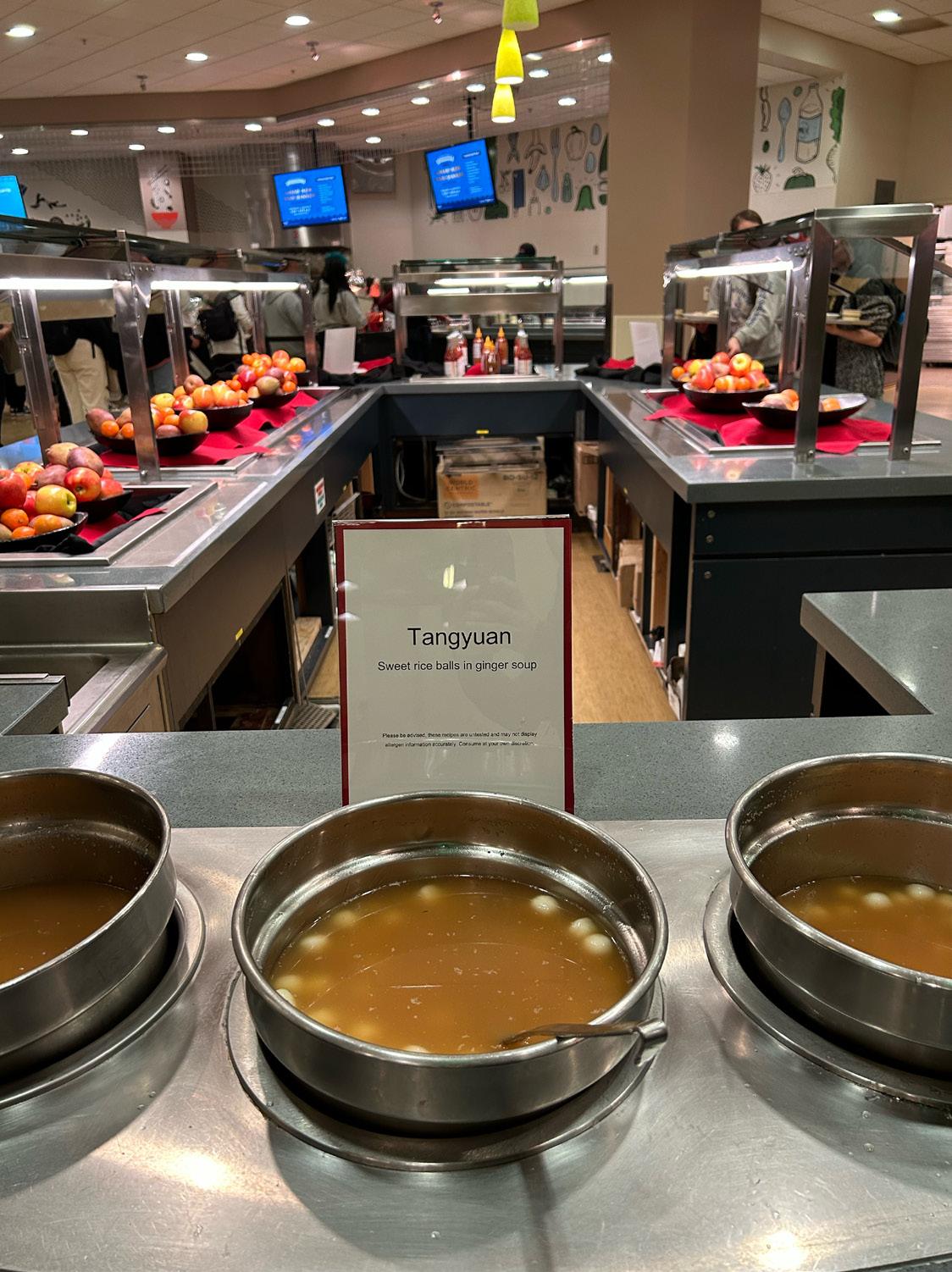
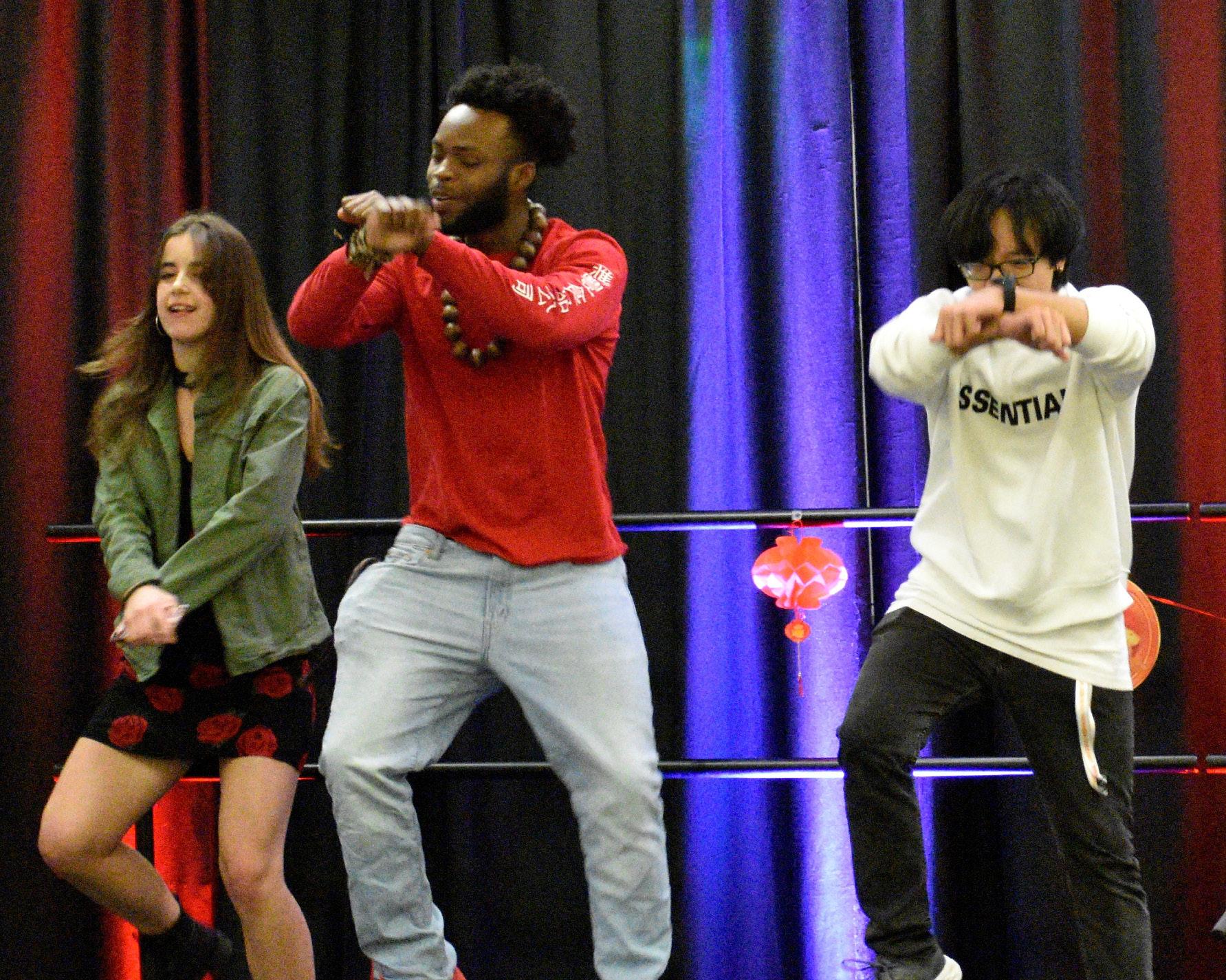
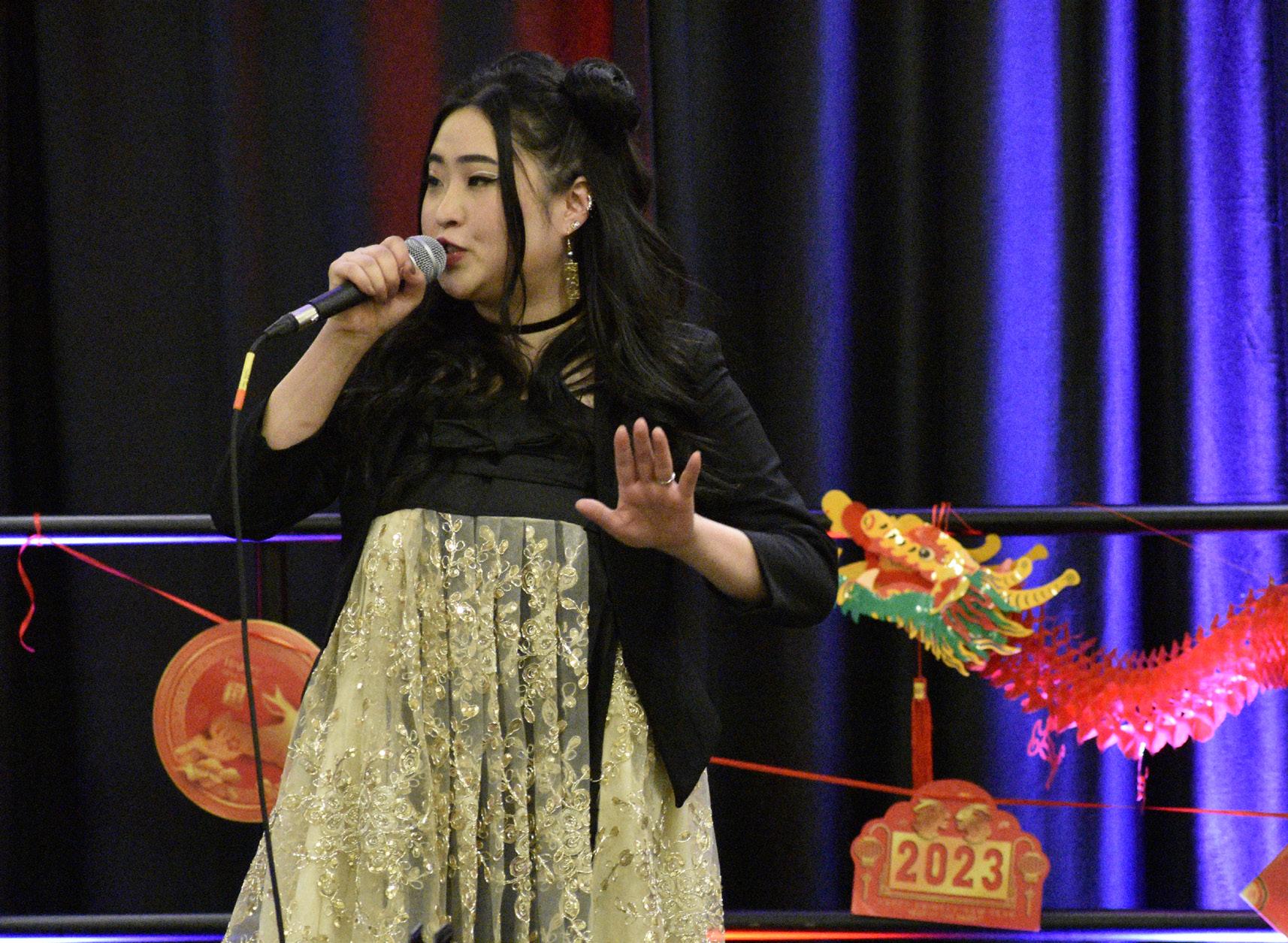
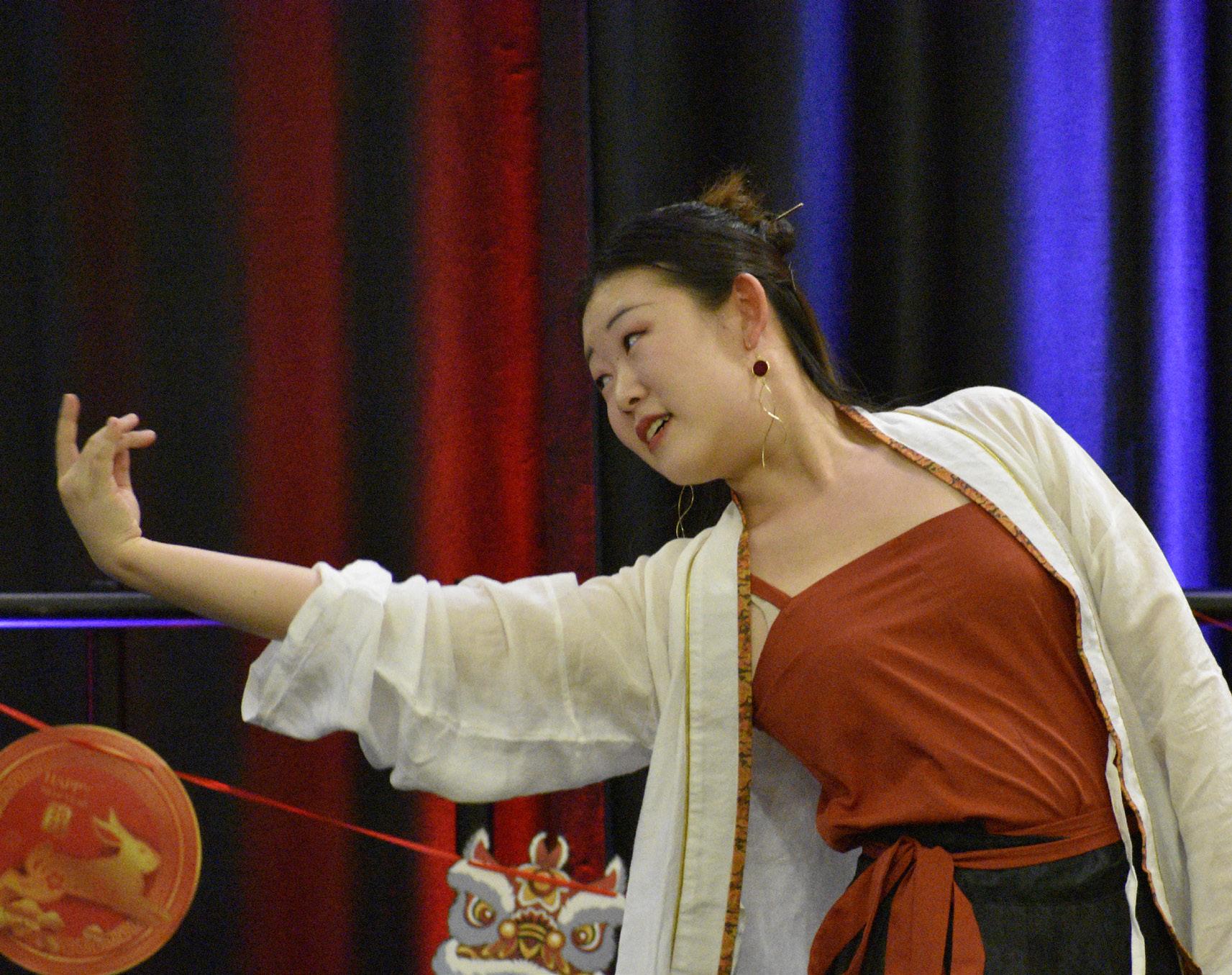 Tangyuanandfruit. Photo by Alahnna Connolly
TraditionalChinesedancebyReneeBi. Photo by Andrew Ulstad
SingerHannahCho.
Photo by Andrew Ulstad
3guestsdancinggangmanstyle. Photo by Andrew Ulstad
LunarNewyeardinner. Photo by Alahnna Connolly
Tangyuanandfruit. Photo by Alahnna Connolly
TraditionalChinesedancebyReneeBi. Photo by Andrew Ulstad
SingerHannahCho.
Photo by Andrew Ulstad
3guestsdancinggangmanstyle. Photo by Andrew Ulstad
LunarNewyeardinner. Photo by Alahnna Connolly


The building that started it all was completed in 1891, one year after the Washington State Normal School in Ellensburg was founded. The building’s iconic tower has become a symbol for CWU, used in a litany of promotional materials ever since.


Currently home to the communication and ROTC departments, Lind was finished in 1947 and renovated in 2019. Lind’s construction materials included a myriad stone to honor the building’s original department, Geology.
The final building completed before World War II boasted stained glass windows and a large fountain in the courtyard upon completion.



The Museum of Culture and Environment (MCE) invited photographer David Bayles to showcase his exhibit titled “Sap in their Veins” from Jan. 26 through March 11. Bayles gave a presentation about the impact of his exhibit, where he told the stories of the loggers and trees that comprise this collection. Amidst a divide between environmentalists and loggers in the 1980s, Bayles set out to shed light on the side that he spent so much time with.
“I created this exhibition with the hope, desire and intention of helping to bridge some of those divides,” Bayles said. "Today, we again live in times of deep, deep divisions, and I believe in the power of stories that reflect our shared humanity to help us see beyond those divides.”
Bayles said he took a job logging with Tom Martin, and there he got to understand the lifestyles of the people who do the manual work of taking trees down.
“Tom paid 50 cents an hour more than anybody else, and so he had the best crew," Bayles said "They
the most efficient. We put out 53 loads of logs a day. I love the camaraderie that comes from that kind of danger where you rely on one another to stay safe.”
After logging for 4 years, Bayles said the men on his crew wanted him to continue pursuing his education in photography and told him they hoped he would not forget them..
“I went to school, graduated, and I did kind of forget about them until I started reading about the spotted owl wars in the LA Times and other magazines,” Bayles said. "I realized all this confrontation, and I thought, I have these photographic skills. I think maybe I could do something that might help bridge some of these divides.”
Bayles said he worked with the Mendocino County Museum because they had similar objectives: to work with "the lunch bucket crew."
"We wanted to leave out the corporate suits and leave out the politics and just tell the stories of the men who had been second, third [and] one time, fifth-generation family loggers,” Bayles said.
“I’ve been a lifelong envi-
thought I would be able to feel sympathy for a logger," Bayles said."Now, I do.”
Engagement with Museum of Culture and Environment Director Hope Amason said,“[the exhibit] deals with issues that we all face every day, whether we are aware of them or not, that pertain to how people interact with the environments around us."
Amason continued: “[Those issues] divide us ultimately, but we really need to come and sit together and have this conversation because one thing that loggers and environmental groups have in common is a love of trees and of the forest.”
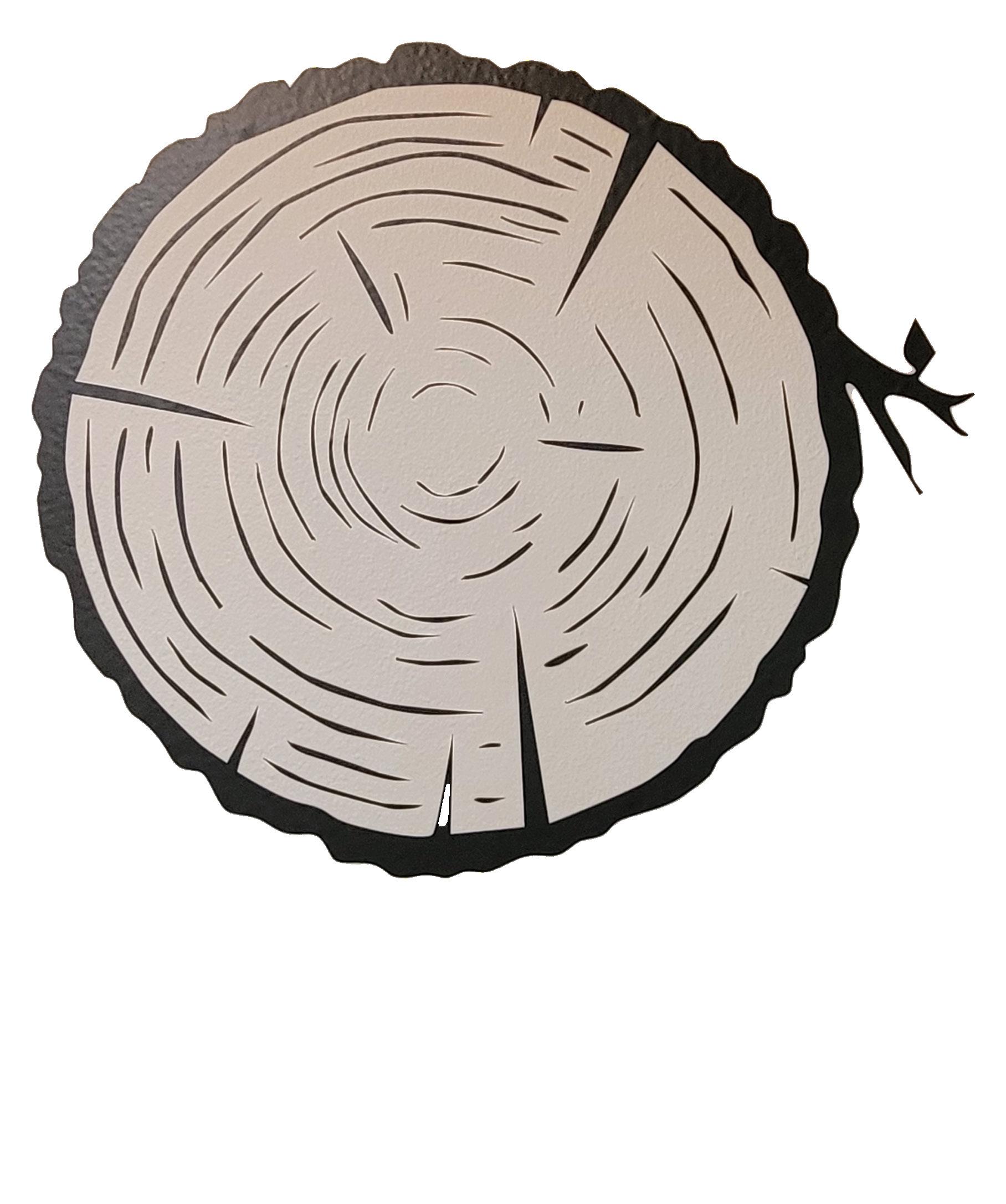
She said “we can't really have those kinds of conversations until we remember to humanize each other, even when we stand on different divides.”
Amason recommended the exhibit for photography and art students who think about capturing the world through a lens and composition.
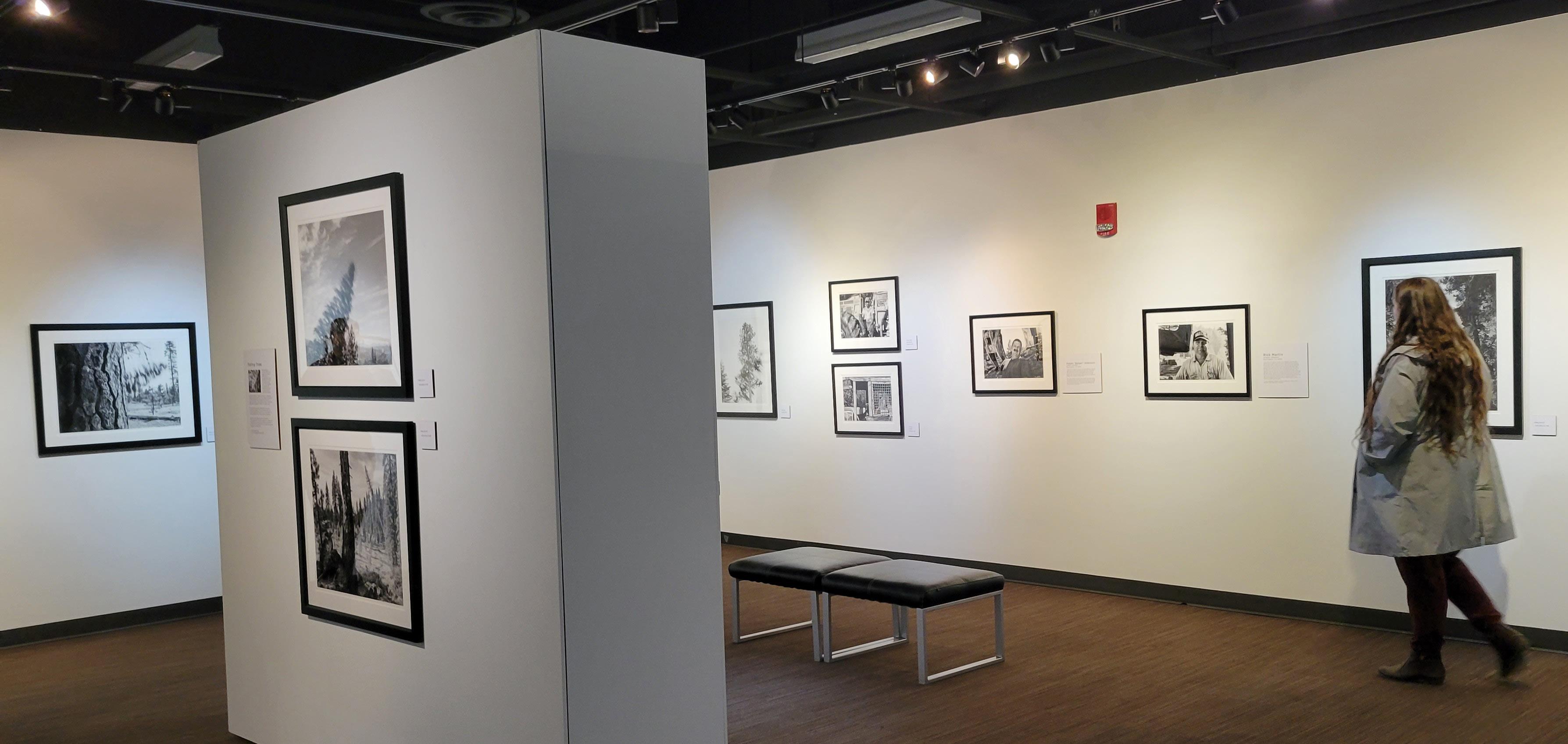
CWU student Tyler Smith said he felt a connection with the exhibit through his own background.
“I’ve grown up my whole life working on Christmas
like this, but that family’s always done the lumberjack industry and they’re always telling me these types of stories," Smith said. "It’s so cool seeing the deeper levels of that through somebody else’s eyes.”
Amason said Department of Natural Resources Forest Manager Jason Emsley will be speaking about spotted owls in central Washington on Feb. 16 at 5:30 p.m. at the MCE.

She also said that the Museum Advisory Council (MAC) has open positions for CWU students to provide their input on which exhibits should be displayed
in the museum in the future. Any student who is interested can contact her at hope.amason@cwu.edu for more information.
“I believe in the power of stories that reflect our shared humanity to help us see beyond those divides.”
- David BaylesKatherine Camarata Lead Editor
While some may say it’s best not to see how the sausage is made, we at The Observer believe it’s your right to see beyond the curtain of secrecy into our behind-the-scenes process. In five simply reductive steps, I’ll explain to you everything that goes into creating our weekly newspaper.
Step 1: Pitch stories and find sources.
One of the more nerve-inducing parts of class, where reporters have to share (out loud) ideas for what they want to write about. They receive story assignments from section editors and reach out to sources (professors, random students, mad scientists, it varies wildly). With a click of the send button, our staff is on its merry way to a full set of pages.
Step 2: Edit drafts.
After stories are assigned, buckle up because it’s time for some brutal honesty. The Associated Press Style guidebook is our holy grail, and the Google suite is our wine. Copy and section editors leave comments on story drafts in Google Docs, letting reporters know what information they are missing and make format suggestions per AP Style rules (which change every year and seem behind the times, if you ask me, so we take some liberties.)
Step 3: Design the flat plan.
This is where the magic happens, if magic was made out of frustration. The lead editor draws up the flat plan every Friday, a mockup layout of the upcoming issue. Fitting the right stories on the right page is always a puzzle. I was known to burn through seven or more drafts for each flat plan, until I realized this is a job better left for graphite than ink. Erasers are the unsung hero of step three.
Step 4: Cry. Simple as that.
It can be hectic trying to stay on top of reporters and their deadlines as well as my own deadlines, not to mention the occasional public apology for a typo made at 1 a.m.. No matter how much we obsess over editing during design night, some mistakes are bound to slip through. Crying is a healthy way to release the pressure of needing to be perfect, which is impossible. I don’t always shed a tear for The Observer, but maybe I should more often.
Step 5: Design Night, for final edits and laying out pages.
Where it all comes together or falls apart. Our newsroom gets most of our work done on Monday and Tuesday evenings, when graphic designers lay out all 8-12 pages, depending on how many stories were written that week. Sometimes we throw costume parties and eat muffins, other times we exchange stories with our favorite night-time custodian, Gary. Drop by Lind Hall 115 on a Monday night if you have story tips or want an office tour.
A day often met with feelings of anticipation for fans, confusion for those in the industry who find themselves excluded and relief for people like my mother and I, the 95th Oscar nominations were revealed the morning of Jan. 24.
A24’s “Everything Everywhere All At Once” led the nominees with 11 nominations, including Best Picture, Best Actress, Best Director and two Best Supporting Actress nominations.
Every year, the nominations raise new questions. Which films made it that shouldn’t have? Were any films snubbed? Should Andrea Riseborough’s campaign be praised or shunned, and will it change the Oscars forever?
Snubs
One of the most egregious snubs of the year came from the lack of recognition for Jordan Peele’s “Nope,” which received zero nominations. I thought “Nope” was one of the most thrilling and innovative films of the year, pioneering both IMAX cinematography, as well as night-time filming.

The film was also one of the few purely original blockbusters of the year, in a year where the academy made a legitimate effort to put populous movies in the show (“Top Gun: Maverick,” “Avatar: The Way of Water” and “Elvis” notably), this feels like a very glaring omission. I would have slotted it in Best Director, Best Cinematography, Best Visual Effects and Best Original Screenplay.
Peele’s first film “Get Out” was nominated for four awards: Best Picture, Best Director, Best Actor and Best Original Screenplay, the latter of which it won. Neither of Peele’s films since (“Us” and “Nope”) have been nominated for even one award, despite both being high level works of genre filmmaking.
The other notable snub is the lack of any recognition toward Luca Guadagnino’s adaptation of “Bones And All.” Similarly to Peele, Guadagnino’s first major effort, “Call Me By Your Name,” received four nominations in Best Picture, Best Actor, Best Original Song and Best Adapted Screenplay, the latter of which it won.
Also similar to Peele, neither of Guadagnino’s efforts since, “Suspiria” and “Bones And All,” have seen any nominations. The comparisons continue, as the subsequent films for both filmmakers
could be classified as horror, despite “Bones And All” being a romance at its core. The academy has notoriously been passive toward horror films; Peele’s initial nominations for “Get Out” were a big deal for that reason.
I would have slotted “Bones And All” in Best Cinematography, Best Adapted Screenplay and Best Actress.
Surprises
One of the biggest twists of the morning came in the form of “Top Gun: Maverick.” Not that it received nominations, a Best Picture nomination for the film has been all but a lock since awards season began, but that it got nominated in Best Adapted Screenplay, and that it didn’t get a nomination in Best Actor.
“Maverick” was nowhere to be found on pre-nomination prediction lists in the Best Adapted Screenplay category, with little to no campaigning done for the film in that regard. Many people say this was a waste of a nomination, however I think that it is a sneakily inspired choice.
The screenplay is incredibly tight and effective, and in an industry plagued by blockbuster scripts more concerned with setting up cinematic universes and finding room for cameos, a screenplay with a cemented beginning, middle and end is sadly refreshing. Not to mention the legitimately moving moments of triumph, brotherhood and emotion.

Meanwhile, many analysts and insiders - including myself - predicted a Tom Cruise Best Actor nomination, which he did not recieve.

Whether it would’ve legitimately been for Cruise’s work in “Maverick,” or serve as a legacy nomination (like what was seen with Jamie Lee Curtis this year in Best Supporting Actress) was up for debate, but a nomination seemed like a forgone conclusion.
Cruise not seeing a Best Actor nomination opened the door for another surprise in the category: Paul Mescal’s nomination for his performance in A24’s “Aftersun.” Mescal, internet-darling for his work in Hulu’s “Normal People” and for his currently in-turmoil relationship with singer-songwriter Phoebe Bridgers, was a late-riser in pre-nomination power rankings.
“Aftersun” won a jury prize at the Cannes Film Festival this past year, and debuted in theaters in late Oct.. However, the film’s quick rise in
the public consciousness and subsequent nomination can mainly be attributed to its on-demand market, as its late Dec. at-home release aligned perfectly to be right before the Jan. Oscar-voting window.
Andrea Riseborough
In the biggest surprise of this year’s class, Andrea Riseborough received a nomination in Best Actress for her work in “To Leslie,” the film’s lone nomination. Now, I have not seen “To Leslie,” but that is part of the controversy.

Prior to two weeks ago, “To Leslie” was not on the radar of any voter or media member, and the film made less than $30,000 at the box office.
However, after a rare Twitter post from actor Edward Norton publicly supporting the film and specifically Riseborough’s performance, people took notice of not just the film but also the suspicious nature of Norton’s post.
After Norton’s tweet, people noticed other celebrities posting on various social media platforms about Riseborough’s performance, including Kate Winslet, Jennifer Aniston and Helen Hunt. This led to debate on whether or not these tweets were genuine.
Oscar voting closed on Jan. 17, just one week after Norton’s tweet. Whether or not the tweets were paid for is up for debate, but at the end of the day, Riseborough still got the nomination. However, it may not last long.

On Jan. 27, the Academy released a statement saying “We are conducting a review of the campaign procedures around this year’s nominees, to ensure that no guidelines were violated, and to inform us whether changes to the guidelines may be needed.”
Since this is unprecedented territory for the Academy, there is no knowledge on what this would lead to. If the nomination were to be revoked, would another actress receive her spot instead? Perhaps Viola Davis for her work in “The Woman King,” or Taylor Russell for “Bones And All.”
Alternatively, there could be no replacement for Riseborough and she could either retain the nomination, or the award would be voted on with only the remaining four actresses.
The great thing about awards season is that we still have the actual ceremony to look forward to, where more upsets, twists and turns are sure to take place.
By now, most of you have probably heard of AI art, and some of you have used AI art generators, Heck, even I am guilty of trying it out. However, as this new and improving technology becomes more popular, it also brings up some questions.

As an artist myself, I wondered what AI-generated art means for the art community, and if it is ethical. After some digging, I am here to tell you that AI art is not as innocent as it seems.
Zileni Milupi Staff ReporterCultural and identity-based clubs are the heart and soul of extra-curricular activities on campus.

When I came to the U.S. in 2019 to pursue my undergraduate studies, I had a somewhat decent idea of what college here would be like. Despite my immense exposure to American media, specifically regarding college life, I still experienced culture shock in a variety of aspects.
When I attended Cascadia College in Bothell, Washington, the first thing that stood out to me was the identity-based clubs. Some of these clubs included the South Asian Student Association, Japanese Culture Club, Korean Language Club and Bridges International.
As someone from a predominantly mono-racial country, I was quite intrigued by these clubs. Of course, I had known that the U.S. is one of the more diverse countries in the world, but seeing different people celebrate and share their identities with each other is something beautiful to witness.
At Cascadia College, I was a member of Bridges International, as I identify as an international student. Being a part of that club gave me a sense of belonging and community. Despite members of the club having different cultural backgrounds, we all shared a similar experience navigating life in a new country.
When I transferred to CWU two years ago, I was curious to see what kind of cultural clubs there would be. I anticipated that CWUwould have more clubs because Cascadia College, as a community college,
is obviously smaller. To my satisfaction, there were even more cultural cubs than I expected. About a month before I was set to arrive on campus, I did some research on CWU clubs on Instagram. I came across the Black Student Union (BSU) and African Student Association (ASA). During the time I’ve been at CWU, I’ve only attended a handful of meetings of both clubs. I would attend more if it wasn’t for my schedule. Nevertheless, the few times I have attended, the clubs provided me with a feeling of comfort and solidarity.
There’s just an indescribable feeling of joy you get when you’re around people with shared experiences and identities.
I’ve also had the chance to attend a meeting at CWU’s Filipino American Student Association (FASA). Although I don’t identify with Filipino culture, I had the desire to support a different identity club and learn more about their culture.
An article in Campus Times from the University of Rochester explains that cultural clubs tend to invite people who don’t identify with that culture.
“When cultural groups explain what their club is, they make sure to emphasize that all are welcome, and they genuinely do want people of other identities to join their club.” (Campus Times, University of Rochester).
Attending at least one cultural club is something I think everyone should try to do before they graduate. If you haven’t yet, I highly recommend attending a meeting or event hosted by an identity based club on campus, it’s an experience you don’t want to miss out on.
There are two main issues with AI art. The first is that AI art generators are producing work faster and cheaper than actual artists, so artists are in danger of losing their jobs to this technology.
According to The New York Times, people have already begun to use AI art instead of hiring artists. They spoke with Mr. Waldoch, a young game designer, who did just that.
The NYT article said: “Initially, Mr. Waldoch planned to hire human artists through the gig-work platform Upwork to illustrate each day’s rhyming word pair. But when he saw the cost — between $50 and $60 per image, plus time for rounds of feedback and edits — he decided to try using A.I. instead. He plugged word pairs into Midjourney and DreamStudio, an app based on Stable Diffusion, and tweaked the results until they looked right. Total cost: a few minutes of work, plus a few cents. (DreamStudio charges about a cent per image; Midjourney’s standard membership costs $30 per month for unlimited images.)”
Now, AI stealing jobs is not a new problem. As technology continues to improve, many people are at risk of losing their jobs to AI. But it is much worse if the AI that is being credited and taking the jobs of artists, is also stealing the data from those artists in order to make its creations.
This brings me to the second issue: AI art generators are stealing from artists to produce images, essentially plagiarizing and profiting from it. How do we know that the AI is stealing from artists? Well, this is where the laws get complicated, and where the fight begins.
AI art generators cannot create original work. They have to be fed
pre-existing images and artwork.
According to sciencealert.com, “When Stable Diffusion was being built, machine-learning algorithms were fed a large number of image-text pairs, and they taught themselves billions of different ways these images and captions could be connected. … it’s far from a streamlined process.”
At first, the companies that created these AI art generators argued that the AI learns from these images, but creates something new, just like an artist would. However, since AI art’s emergence, more and more proof has come out that AI is taking bits and pieces from artists’ work and directly incorporating it into the images.
According to Levelup.com, some artists have found bits and pieces of their work, and their signatures, in images concocted by AI generators.
One of the AI art generators, The Lensa app created by Prisma Labs, has generated portraits that seem “to have hints of artist signatures.” This has led to people suspecting
that the AI is indeed taking many artists’ work without their consent.
AI art generators are stealing artists’ work to learn from it and profiting off of the images that they generate for little cost, and the artists whose work fed these machines get nothing. If that doesn’t sound wrong to you, I don’t know what will.
There is a light at the end of the tunnel though. Artists have begun to stand against these tech companies, and fight for their work.
According to news.artnet.com, “A group of artists has filed a class-action complaint against the companies behind a trio of A.I. art generators, saying the services violated copyright and unfair competition laws.”
In addition to the lawsuit, artists all over have begun talking about AI art and its impact. It may be tempting to use AI art, but now that you know the consequences, please consider supporting an actual artist instead. It may take a little longer, and cost a little more, but the result will be worth it.
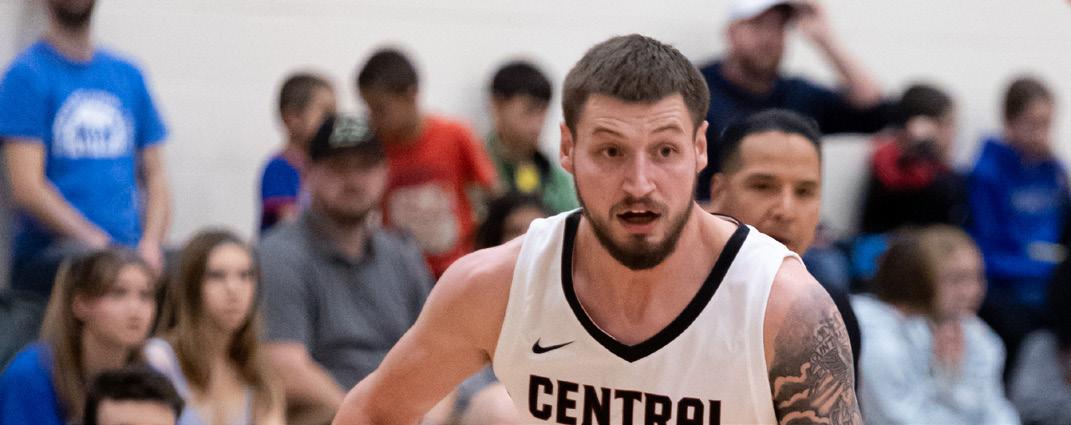 StorybyTre’jonHenderson
StorybyTre’jonHenderson
CWU baseball is going from training in the brisk of Ellensburg to the sun-soaked state of California, as they begin their season on Feb. 3. To start the roughly three-week road stretch, they will be playing the University of Redlands (UofR) and Cal State San Bernardino (CSUSB).
Assistant Coach Joel Johnson spoke about their team’s progress so far with many returning underclassmen and a young team as a whole.
“There was a lot of guys who got thrown into the fire,” Johnson said. “It’s not that they weren’t necessarily ready for it, but they’re 18-19 years old, playing against 22 year olds. What came from that, I think it’s going to be special down the road.”
According to Johnson, the last month has been marked with assessment and gauging how the players are performing after winter break.
“Who took care of business? Who’s gaining? Who’s healthy? How are we functioning?” Johnson said. “Those first couple of weeks is more individual based. Now this week as we go, it’s a lot more team oriented in terms of defensive rotations and alignments and situational stuff.”
There are a few particulars that the coaching staff are honing in on at practice leading up to their matchups.
“Making sure that when we get down there it’s not the first time we go through our pregame routine,” Johnson said.
“[Even] something as simple as pre-game batting practice, like we haven’t really been able to get onto a field.”
Senior pitcher Brayde Hirai said the weather is playing a role in their preparations. Recently, they’ve primarily been practicing at Ellensburg High School.
“There’s just two batting cages,” Hirai said. “So we do our work on the side and try to get in what we can. So hitting, throwing live, and inside of the cages.”
However, in the last week, the weather has been heating up. That means the team has had opportunities to practice, even if it is slightly unconventional and at a reduced time of an hour and a half.
“We’ve been able to be outside on the turf field, playing baseball on a football field. So, it’s different,” Hirai said.
In 2022, CWU played CSUSB five times and accumulated a record of 2-3 against them. UofR is a new challenge.
“I think [UofR] is a good matchup for us, especially beginning of the year,” Hirai said. “I mean they’re outside the whole time and stuff like that, but the game doesn’t change.”
Head Coach Desi Storey said he is looking forward to the way his team responds to adversity.
“I want to see our guys take the field like they’ve been there before, not get the big eyes,” Storey said. “You’ve played the game before, play with maturity. Understand we’re going to make mistakes. What are you going to do to overcome those mistakes?”
Storey said the biggest takeaway he wants from the first week is a focused mindset.
“We got to grow in this and we got to understand every game is a new game,” Storey said. “Now, if we come home 4-0 I’m gonna be happy as hell.”
With Spring right around the corner, CWU’s softball team has been preparing during the off-season to finally get their time to shine.
Third-baseman Myiah Seaton shared some of what the team has been doing and enduring to get ready for the upcoming season.
“We have not had a lot of resources to do the things we should be doing during practice since Ellensburg’s weather has been coasting in the 20s and 30s,” Seaton said. “We do not have access to our optimal indoor facility, however, we have been able to find ways around it and have been doing a lot of at-bats with our own pictures simulating plate appearances has been very beneficial for our offensive side.”
Among the many familiar faces that CWU brought back to the team, Seaton is one of the few on the team that will be completing her final season as a Wildcat this year. Last season, Seaton started in all 47 games and was recognized at the end of the season with Honorable Mention All-GNAC.
“Throughout the summer I wouldn’t let myself stop working because of this looming thought that this year is my last chance ever to play the game that I love,” Seaton said. “With that, though, I found myself honing a ‘just have fun’ mentality since the situation is out
of my control. If I realize what I’m doing: making memories with my amazing teammates and playing my game, then all I can do is thank my lucky stars and have fun.”
CWU also brought in some fresh faces this year, including transfer student and catcher Anna Fridell who said she is really looking forward to spring ball after the preseason.

“I’m thrilled about spring season coming up,” Fridell said. “The difference about this year’s team is the adversity we faced throughout these winter months. We knew that we had to be ready for opening day despite anything that’s thrown at us, and we feel more than ready for that first pitch.”
Their work has gone far but unnoticed given their ranking in the Great Northwest Athletic Conference (GNAC) preseason coaches poll. CWU placed fourth in the poll with 32 points, only three points behind the Western Washington University (WWU).
“After being polled seventh out of seven teams last year, we see fourth place as an improvement, but still not accurate to our standards,” Fridell said. “We aren’t shaken by this ranking. We know that with our best bats and defense put together, we can beat anyone and being ranked fourth only gives us that extra edge to prove it to the rest of the conference. We’re excited to come out strong and send a state-
ment.”
Both Seaton and Fridell described the team this year as a very tightknit group.
“Since our very first team meeting back in the fall, Coach Joe emphasized that if we want to be a championship team, we must stay together … our team has made camaraderie and togetherness a priority this year,” Fridell said.
“I think the camaraderie of the team is what’s going to bring us to the top,” Seaton said. “It’s inevitable
[when being] on a team full of 25 plus girls to have some sort of miscommunication at times, but we’ve been doing team-building exercises which I think is bringing us together as a family.”
CWU softball will appear in their first regular season games in Irvine, California participating in the Concordia Kick-Off Classic tournament. They start off their weekend of play on Friday, Feb. 3 at 2 p.m. and will be playing all weekend until Sunday.
By: Isaac HinsonDamian Lillard has won Player of the Week and I am so alive. The Blazers legend has been averaging 42 points and seven assists in his last four games, including a 60 point nuclear explosion against the Utah Jazz. What makes Lillard’s hot stretch even more impressive is that he has been doing it incredibly efficiently, shooting 59.6% from the field and 48.9% from three in his last four, re-cementing himself as a top guard in the league.
Lillard’s recent hot streak comes right before the looming NBA trade deadline, and noise has begun to get louder around the team. Both Josh Hart and franchise staple Jusuf Nurkic have been listed as available for trade. Nurkic has been with the team for seven seasons now, and is the longest tenured Blazer, save for Lillard.
Parting ways with Nurkic would be a drastic decision. Nurkic and Lillard are best friends off the court, and with the franchise essentially answering to Lillard, he must ask the same question he asked himself before the CJ McCollum trade last season. What does he value more: His relationship with his friend, or winning a championship?
Loss 70-69
Loss 75-66


My future did not die: it’s a mixed reception. It made its fate and schedule well enough, Its vast ideas growing with fervor. If I missed out on growing through experience It wasn’t for any lack of nurturing spirit.
Kai Kyzar (they/them)
O we mustn’t excuse what happened to us! He was sound of mind and present and every excuse. He lies so sweetly with venomous speech! I fight and object and resist from him. And yet the night won’t end and the past can’t change.
I am not me, I am not even them, Though they are a different and changed being –It might be better if it were different, and it was my choice. But it is done, and my body forever altered with scars, And I quietly sob and do not speak of it.
Gallery One
D and M Coffee
Winegars

Young T and Tea
Jerrols



Blue Rock
The Tav
Red Pickle
Julep
Utopia
Kiku Chan

The Pearl
Palace Cafe
Cornerstone
The Mule
Lunchbox Cafe
ABC Donuts
Evolve
Wings Central
The Horseshoe
Dark Moon
Early Bird
The Porch
Old Skools
“A
of Sylvia Plath’s Stillborn”
 by Andrew Ulstad
by Andrew Ulstad
“I really love Big and Rich, Rolling. It’s like their theme song, it’s a country song and it just hypes you up when you’re driving.”
“Aw, that’s hard, I listen to way too much music … I could see like an artist, Future for sure. I’m always on Future.”

“It kind of depends on the day, time, and the vibe, but one that always hits for me … it has to be Sunburn by Owl City, every time.”
Mickayla Risenmay is a CWU alumnus, from the psychology and studio art and design departments. She uses her online presence to focus on mental health awareness and disability advocacy.

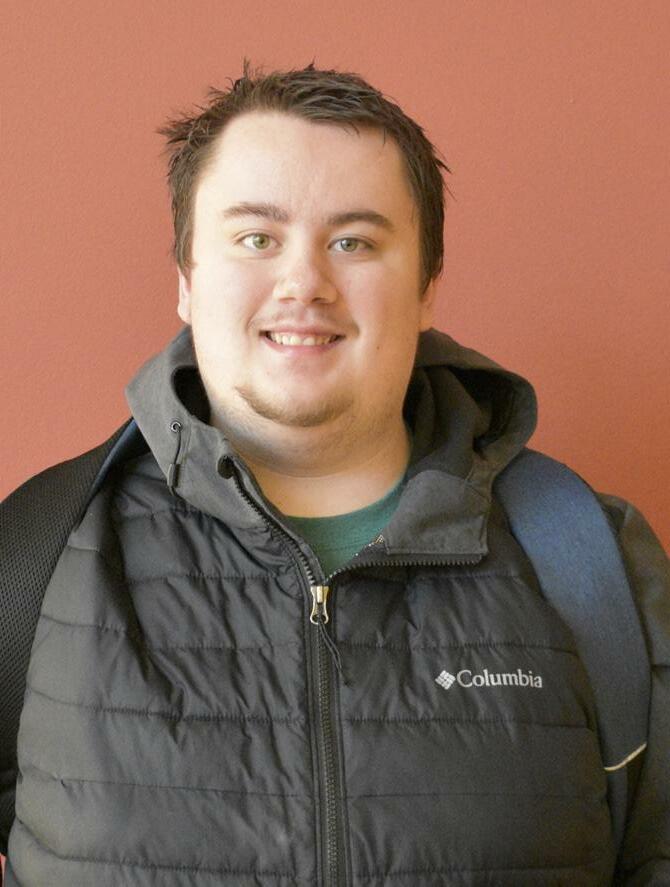
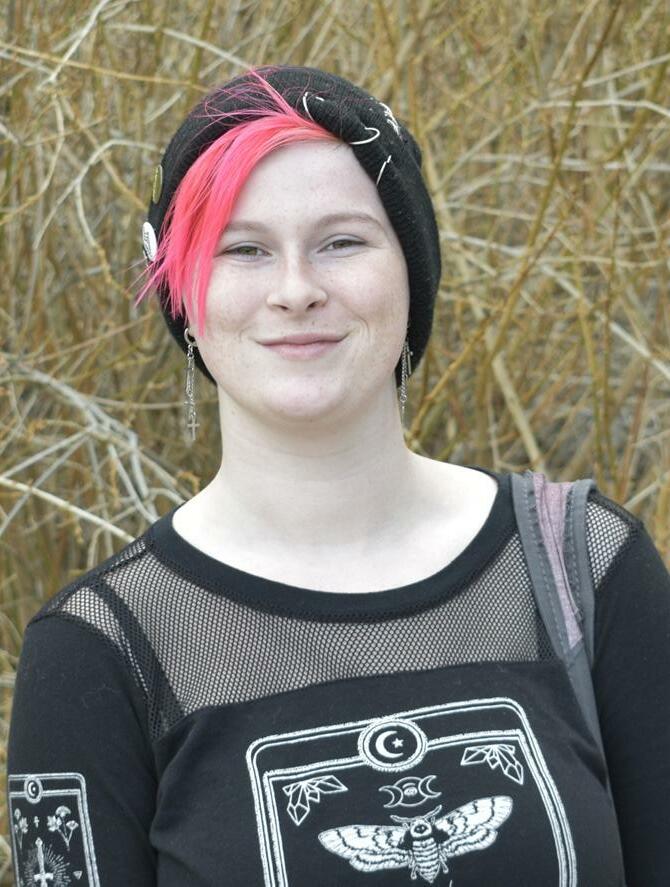
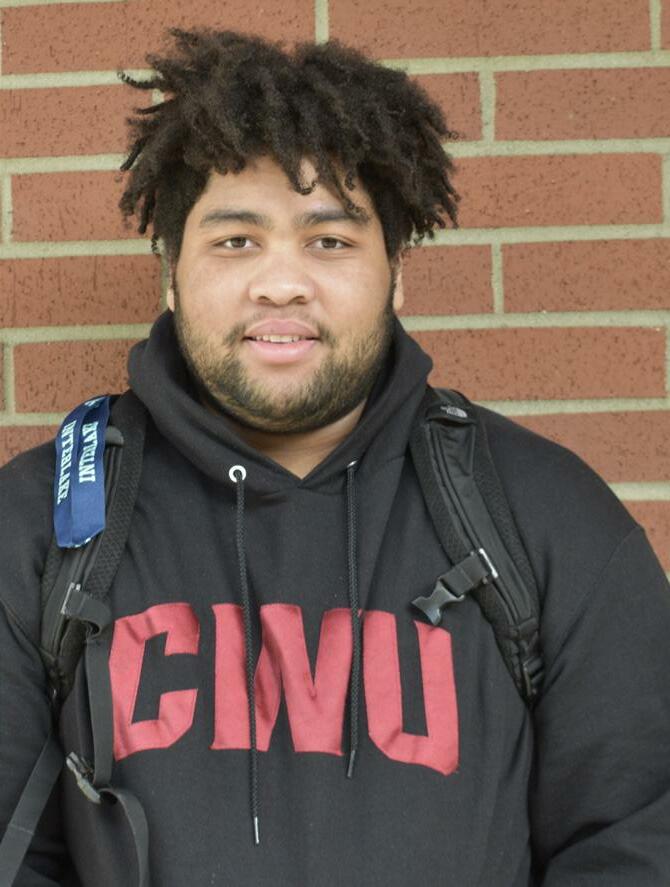

What makes you passionate to talk about mental health?
I have many reasons that I have become so passionate about sharing about mental health such as raising awareness, creating a safe community, and in memory of those I have lost to mental illness.
I remember when I started sharing my own struggles with mental health many people started to bully me more. Saying I was an attention seeker and making things up when this was further from the truth. I almost stopped sharing and stayed quiet till I had individuals come to me thanking me for sharing what I went through. From me openly sharing what I went through they felt less alone, less crazy, that there was the hope of healing and inspired them to get professional help for their health. These were only a few people but those few people changed everything in my mind. Knowing that I made a difference and gave people hope and a feeling of community meant more to me than those negative words said about me. From that moment on I knew I could not be silent about my struggles. Though some may think I am attention-seeking, I am able to help others struggling to feel less alone and hopeless and that’s worth it to me.
What’s your favorite aspect of the type of work you’re doing?
I love connecting with people and impacting them positively. This world is so negative and being able to be a positive impact on people means so much.
Where do you see yourself 5 years from now?
5 years from now, I see myself as a trauma counselor. Knowing me probably still in school while practicing to learn additional specialties or maybe even getting my doctorate (Psy D) in clinical mental health counseling. I hope to be either treating veterans or other trauma victims and helping them to live better lives by healing from their past. I hope to be speaking opportunities, and growing a following online about mental health to further raise awareness, help individuals with coping techniques, and inspire them to get help and be open up about their mental health.
What skills have you found helpful in your daily life from your psychology degree and studio art/design minors?
The skills I have developed from my education have helped me so much in day-to-day life. Not only am I able to help others but myself to express myself through my words and art. I learn effective skills to help others I love as well as strangers in crisis to be able to deescalate their emotions and mind to ones that they can effectively live and do what they need to. By learning these skills I am able to help even more people who reach out to me about my content seeking help and resources to get better. Without having the education I would not be able to help as much as I currently am and I am so grateful for and continue to be grateful for it.
